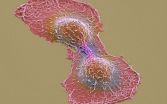(Press-News.org) Treatment with dimercaptosuccinic acid (DMSA), an oral chelation agent, was linked to reductions in the amount of lead in blood in young children in Zamfara State, Nigeria following environmental lead contamination, according to a study by Jane Greig and colleagues from Médecins Sans Frontières (MSF) published in this week's PLOS Medicine.
The researchers report findings from an MSF program initiated in May 2010 to reduce lead poisoning in children following widespread environmental lead contamination due to gold mining in Zamfara State, Nigeria, leading to the death of an estimated 400 young children in the 3 months before chelation therapy was provided. The analysis included 3180 courses of DSMA chelation therapy administered between 1 June 2010 and 30 June 2011 to 1,156 children ≤5 y of age who had measurements of venous blood lead levels before and after each course of DMSA. The researchers found that, on average, treatment with DSMA was associated with a reduction in venous blood lead levels to 74.5% of the level at the start of the DMSA course. Nine of these 1,156 children died during the period studied, with lead poisoning likely involved in three of these deaths. The researchers report that no clinically severe adverse effects related to DMSA were seen during the study period, and no laboratory findings were recorded that required treatment discontinuation.
While the findings cannot be used to reach any definitive conclusions about the effectiveness or safety of oral DMSA as a treatment for lead poisoning in young children, blood lead levels decreased and the number of deaths was substantially reduced after the program was initiated.
The authors say: "This experience with basic supportive care and chelation in a large paediatric cohort adds significantly to the evidence base for clinical management of epidemic lead poisoning, particularly in resource-poor settings."
INFORMATION:
Research Article
Funding: This study was funded as part of MSF operations. Lundbeck donated some DMSA, but had no role in the treatment programme or in study design, data collection and analysis, decision to publish, or preparation of the manuscript. The findings and conclusions in this presentation have not been formally disseminated by the Centers for Disease Control and Prevention/the Agency for Toxic Substances and Disease Registry and should not be construed to represent any agency determination or policy.
Competing Interests: The authors have declared that no competing interests exist.
Citation: Thurtle N, Greig J, Cooney L, Amitai Y, Ariti C, et al. (2014) Description of 3,180 Courses of Chelation with Dimercaptosuccinic Acid in Children #5 y with Severe Lead Poisoning in Zamfara, Northern Nigeria: A Retrospective Analysis of Programme Data. PLoS Med 11(10): pmed.1001739. doi:10.1371/journal.pmed.1001739
Author Affiliations:
Médecins Sans Frontières, HOLLAND
Médecins Sans Frontières, UNITED KINGDOM
Bar Ilan University, ISRAEL
London School of Hygiene & Tropical Medicine, UNITED KINGDOM
National Center for Environmental Health, Centers for Disease Control and Prevention, USA
University of Colorado School of Medicine, USA
Federal Ministry of Health, NIGERIA
Federal Ministry of Communication Technology, NIGERIA
Guy's and St. Thomas' NHS Foundation Trust, UNITED KINGDOM
Contact:
Jane Greig
Médecins Sans Frontières
UNITED KINGDOM
jane.greig@london.msf.org
Oral chelation for environmental lead toxicity
2014-10-07
ELSE PRESS RELEASES FROM THIS DATE:
How female flies know when to say 'yes'
2014-10-07
A fundamental question in neurobiology is how animals, including humans, make decisions. A new study publishing in the open access journal PLOS Biology on October 7 reveals how fruit fly females make a very important decision: to either accept or reject male courtship. This decision appears to be generated by a very small number of excitatory neurons that use acetylcholine as their neurotransmitter located in three brain regions. This study provides the framework to understand how decisions are generated and suggests that a decision is reached because that option is literally ...
New at-risk group identified for gastrointestinal stromal tumors
2014-10-07
Researchers at the University of California, San Diego School of Medicine have, for the first time, clearly defined the epidemiology of gastrointestinal stromal tumors (GIST), which occur primarily in the lining of the stomach and small intestine. One key finding: Patients of Asian descent, who have not previously been identified as an at-risk population, are 1.5 times more likely than other patient groups to be diagnosed with this type of tumor. Results of the study were published this week in Cancer Epidemiology, Biomarkers & Prevention, a journal of the American Association ...
George Washington physician addresses stigma against patients and providers with disabilities
2014-10-07
WASHINGTON (Oct. 7, 2014) — Nearly 20 percent of Americans have a disability, yet only 25 percent of medical schools include in their curricula caring for people with disabilities. Numerous reports have documented that people with disabilities have poorer health and receive inferior care.
In a Narrative Matters essay published in Health Affairs, Leana Wen, M.D., director of patient-centered care research and assistant professor of emergency medicine at the George Washington University School of Medicine and Health Sciences, shares her own experiences to highlight ...
Survival molecule helps cancer cells hide from the immune system
2014-10-07
COLUMBUS, Ohio – A molecule that helps cancer cells evade programmed self-destruction, an internal source of death, might also help malignant cells hide from the immune system, an external source of death.
A new study by researchers at The Ohio State University Comprehensive Cancer Center – Arthur G. James Cancer Hospital and Richard J. Solove Research Institute (OSUCCC – James) shows that a molecule called nuclear factor kappa B (NF-kB) helps cancer cells by inhibiting the immune system's ability to detect and destroy them. The molecule regulates genes ...
Researchers identify 'Achilles heel' in metabolic pathway that could lead to new cancer treatment
2014-10-07
DALLAS – Oct. 7, 2014 – Researchers at UT Southwestern Medical Center have found an "Achilles heel" in a metabolic pathway crucial to stopping the growth of lung cancer cells.
At the heart of this pathway lies PPARγ (peroxisome proliferation-activated receptor gamma), a protein that regulates glucose and lipid metabolism in normal cells. Researchers demonstrated that by activating PPARγ with antidiabetic drugs in lung cancer cells, they could stop these tumor cells from dividing.
"We found that activation of PPARγ causes a major metabolic ...
State policies can influence access to heroin treatment, study finds
2014-10-07
State policies can influence the number of physicians licensed to prescribe buprenorphine, a drug that can treat addiction to heroin and other opioids in outpatient settings, according to a new RAND Corporation study.
Examining county-level numbers of physicians approved to prescribe buprenorphine, researchers found a significant link between the number of approved physicians and both specific state guidance regarding the use of buprenorphine and the distribution of clinical guidelines for buprenorphine treatment. The findings were published online by the Journal of ...
Sleeping in dentures doubles the risk of pneumonia in the elderly
2014-10-07
Alexandria, Va., USA – Poor oral health and hygiene are increasingly recognized as major risk factors for pneumonia among the elderly. To identify modifiable oral health-related risk factors, lead researcher Toshimitsu Iinuma, Nihon University School of Dentistry, Japan, and a team of researchers prospectively investigated associations between a constellation of oral health behaviors and incidences of pneumonia in the community-living of elders 85 years of age or older. This study, titled "Denture Wearing During Sleep Doubles the Risk of Pneumonia in Very Elderly," ...
The sex difference in distance running has disappeared for participation but not for competitiveness
2014-10-07
ALLENDALE, Mich. — Even among contemporary U.S. distance runners, men are still much more likely than women to have a competitive orientation, according to researchers at Grand Valley State University in Allendale, Michigan. The findings were published in the online journal, Evolutionary Psychology at http://www.epjournal.net/articles/u-s-masters-track-participation-reveals-a-stable-sex-difference-in-competitiveness/
The new research, led by Robert Deaner, associate professor of psychology at Grand Valley State, shows that, on average, American men participate at ...
Live and let-7: MicroRNA plays surprising role in cell survival
2014-10-07
Researchers at the University of California, San Diego School of Medicine have identified a microRNA molecule as a surprisingly crucial player in managing cell survival and growth. The findings, published in the October 7 issue of Cell Metabolism, underscore the emerging recognition that non-coding RNAs – small molecules that are not translated into working proteins – help regulate basic cellular processes and may be key to developing new drugs and therapies.
Specifically, principal investigator Albert R. La Spada, MD, PhD, professor of cellular and molecular ...
This week From AGU: Avalanche detection, paleoclimate reconstructions, India's Tapti Fault
2014-10-07
From AGU's blogs: Detecting avalanches from sounds we can't hear http://blogs.agu.org/geospace/2014/10/07/detecting-avalanches-sounds-cant-hear/
Researchers have developed a new avalanche monitoring method that uses sound below the range of human hearing to detect and track these deadly and destructive snow slides. The technique can detect an avalanche from the moment it starts, picking up the unheard thump of a rupture in the snowpack that can precede the snow cascade. It can then track the avalanche's path second by second down the mountain.
In a new study published ...




